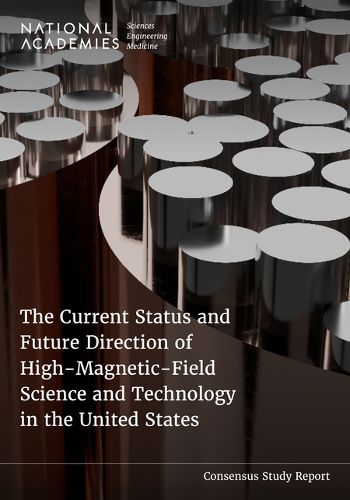Readings Newsletter
Become a Readings Member to make your shopping experience even easier.
Sign in or sign up for free!
You’re not far away from qualifying for FREE standard shipping within Australia
You’ve qualified for FREE standard shipping within Australia
The cart is loading…






High magnetic fields are a vital tool in many areas of science and technology that impact our everyday lives. Magnetic resonance imaging enables a wide range of medical diagnostics and research, while nuclear magnetic resonance is critical for drug discovery research and more. High magnetic fields are an essential component to many proposed fusion energy reactors and are necessary to push the boundaries towards the development of new quantum technologies and semiconductors.
At the request of the National Science Foundation, the National Academies organized a study to identify scientific opportunities and key applications for high-magnetic-field science and technology for the next decade and beyond. This report explores the current state and future prospects for high-magnetic-field technologies and recommends actions to support the workforce, facilities, magnet development, and critical materials access necessary to promote U.S. innovation.
Table of Contents
Front Matter Executive Summary Summary 1 Magnetic Resonance Spectroscopies 2 Magnetic Resonance Imaging 3 Superconducting Magnet Technology for Fusion 4 Condensed Matter Physics 5 Accelerator Magnets 6 Superconducting Materials and Wires/Tapes for High-Field Magnets 7 Helium as a Critical Material for High Magnetic Fields and Adjacent Research 8 Stewardship 9 Training of the Next Generation of High-Magnetic-Field Scientists and Technologists 10 Multimodal Capabilities: Combining High Magnetic Fields with Neutron, Synchrotron Radiation, and Free Electron Laser Facilities Appendixes Appendix A: Statement of Task Appendix B: Public Meeting Agendas Appendix C: Bibliography on Development of High-Temperature Superconductor Magnets Appendix D: Committee Member Biographical Information Appendix E: Acronyms and Abbreviations
$9.00 standard shipping within Australia
FREE standard shipping within Australia for orders over $100.00
Express & International shipping calculated at checkout
Stock availability can be subject to change without notice. We recommend calling the shop or contacting our online team to check availability of low stock items. Please see our Shopping Online page for more details.
High magnetic fields are a vital tool in many areas of science and technology that impact our everyday lives. Magnetic resonance imaging enables a wide range of medical diagnostics and research, while nuclear magnetic resonance is critical for drug discovery research and more. High magnetic fields are an essential component to many proposed fusion energy reactors and are necessary to push the boundaries towards the development of new quantum technologies and semiconductors.
At the request of the National Science Foundation, the National Academies organized a study to identify scientific opportunities and key applications for high-magnetic-field science and technology for the next decade and beyond. This report explores the current state and future prospects for high-magnetic-field technologies and recommends actions to support the workforce, facilities, magnet development, and critical materials access necessary to promote U.S. innovation.
Table of Contents
Front Matter Executive Summary Summary 1 Magnetic Resonance Spectroscopies 2 Magnetic Resonance Imaging 3 Superconducting Magnet Technology for Fusion 4 Condensed Matter Physics 5 Accelerator Magnets 6 Superconducting Materials and Wires/Tapes for High-Field Magnets 7 Helium as a Critical Material for High Magnetic Fields and Adjacent Research 8 Stewardship 9 Training of the Next Generation of High-Magnetic-Field Scientists and Technologists 10 Multimodal Capabilities: Combining High Magnetic Fields with Neutron, Synchrotron Radiation, and Free Electron Laser Facilities Appendixes Appendix A: Statement of Task Appendix B: Public Meeting Agendas Appendix C: Bibliography on Development of High-Temperature Superconductor Magnets Appendix D: Committee Member Biographical Information Appendix E: Acronyms and Abbreviations